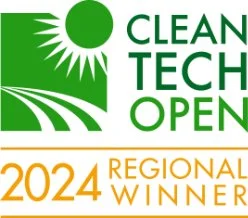
DEEP BLUE INSTITUTE
Blue Economy Development and Maritime Urbanism;
Addressing Regional and Global Climate Change Impacts
INNOVATION ECOSYSTEMS
IMAGINING A BETTER TOMORROW, STARTING TODAY
DEEP BLUE INSTITUTE’s mission is to unite entrepreneurs, grassroots organizations, activists, and local government through public-private partnerships for policy implementation and technology deployment that supports sustainable economic development, resilient coastal communities, and Disaster Risk Reduction.
Deep Blue’s Innovation Ecosystem Development approach to community engagement leverages cross-sector talent, support, and resources to build public-private partnerships for more resilient coastal communities. Through sourcing, design, and deployment of regenerative infrastructure, emerging technology, and systems-based solutions, Deep Blue supports protection of at-risk aquatic ecosystems most impacted by climate change and other anthropomorphic effects, on which maritime economies and coastal communities depend.
Global initiatives and organizations like the United Nations Office for Disaster Risk Reduction and The Buckminster Fuller Institute have been long-time champions of identifying innovated policies and emerging technologies that advance an effective response to the global climate crisis. Deep Blue builds on their important work to leverage local human resources and critical blue technologies that will facilitate coastal community resilience and the integration of effective solution sets for ocean ecosystem restoration and management.
TECHNOLOGY SPOTLIGHT
As part of Deep Blue’s policy innovation and emerging technology development initiatives, we are proud to be supporting Helios Industries, our first portfolio company. Helios is actively supporting coastal community climate resilience through the development of the SolarWing, an affordable, mobile, carbon-free microgrid with scalable energy generation and storage capacity for a wide range of domestic, commercial, and disaster response needs. Learn more and stay tuned as we continue to expand our portfolio of emerging technologies.
“Pollution is nothing but the resources we are not harvesting. We allow them to disperse because we've been ignorant of their value.”
R. BUCKMINSTER FULLER
CURRENT INITIATIVES
Deep Blue is currently engaging industry partners, foundations, research institutions, and individuals in the launch of our first major focus project, Blue Tech Delta Initiative. This multi-sector, multi-scale project will leverage the economic and environmental benefits of emerging blue technologies, global capital resources, and existing regional centers of cultural excellence to realize a virtuous regenerative relationship between the dynamic forces at play in the Gulf of Mexico and at-risk coastal communities. With the lessons learned and the technologies developed over the course of the project, the region will be in a position to become a global leader in the deployment and scaling of these critical and valuable marine infrastructure solution sets in maritime opportunity zones around the world.
MARITIME OPPORTUNITY ZONE BENEFITS:
Improved water quality from nutrient harvesting will significantly improve seafood yields, support the sport fishing industry, and preserve and protect aquatic habitats
Floating regenerative industry deployment will grow and diversify the economies of low-lying communities currently at risk
Create the conditions for the region to capitalize on emerging trends in energy markets (e.g. the U.S. Energy Independence and Security Act of 2007 calls for the production of 136 billion Liters of renewable biofuels by 2022)
Realize the untapped potential for algae technology in drug discovery and production, specialty oils, and a range of valuable chemicals
Floating infrastructure and housing development will allow for current sediment restoration projects by the Army Corps of Engineers to proceed without community displacement
MAPPING OCEAN WEALTH
From the Nature Conservancy
Coastal communities receive multiple benefits from ocean habitats, including coastal protection, fish and food production, and tourism opportunities.
By valuing nature in decisions and development, everyone benefits.
TOURISM
Healthy ocean habitats attract the divers, snorkelers, and other tourists who drive coastal economies. Tourism directly employs 1 in 10 residents of the Caribbean Islands; that’s 2 million people. Coral reefs drive up to $30 billion each year in tourism revenue. At prime scuba diving spots in Palau, a single shark has a lifetime value of $1.9 million, but its fished value is only $108.
FOOD PRODUCTION
The $190 billion global seafood industry depends on healthy fish habitats. Sport fishing is the main source of income for some coastal communities. It brought in $141.5 million to the Bahamas in 2008, and $56.5 million to Belize in 2007. Mangroves are fish factories for the 210 million people who live near them and depend on them for food.
CARBON STORES
Every year, coastal wetlands sequester enough CO2 to offset the burning of over 1 billion barrels of oil. Coastal wetlands are the only habitat that can continuously sequester and store carbon in soil for millenia. Although they cover less than 1% of the ocean, they store over 50% of the seabed’s rich carbon reserves. Just one hectare of mangrove offsets 726 tonnes of coal.
COASTAL PROTECTION
Natural barriers save money and reduce the impact of storms, erosion and flooding to coastal communities. Coral reefs reduce 97% of wave-energy acting as a barrier from storms. They act as the first line of defense for 63 million people globally. Mangroves reduce 66% of wave-height easing erosion and flood risk. Oyster reefs save communities $85,000 per year per hectare when used in place of artificial breakwaters.







